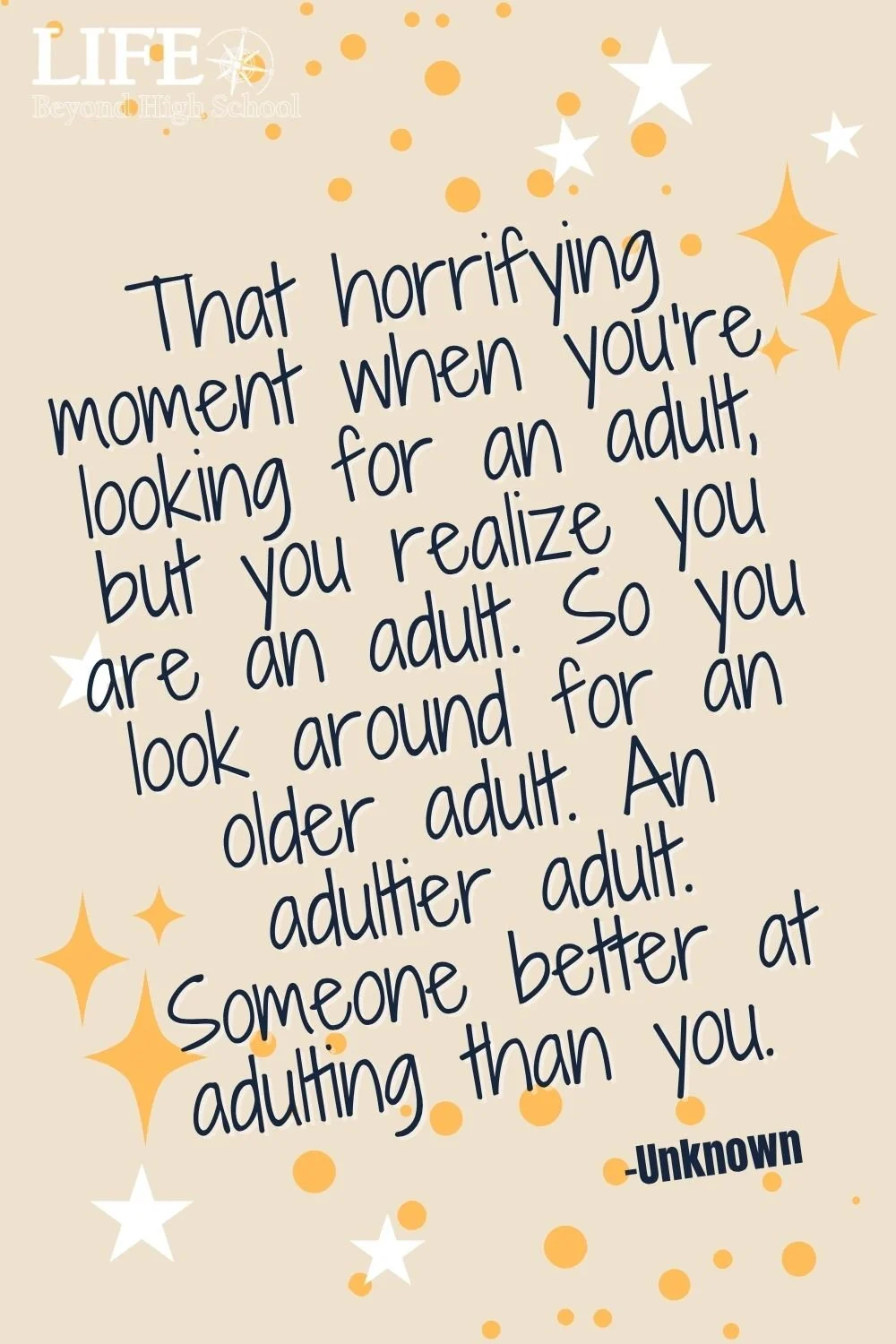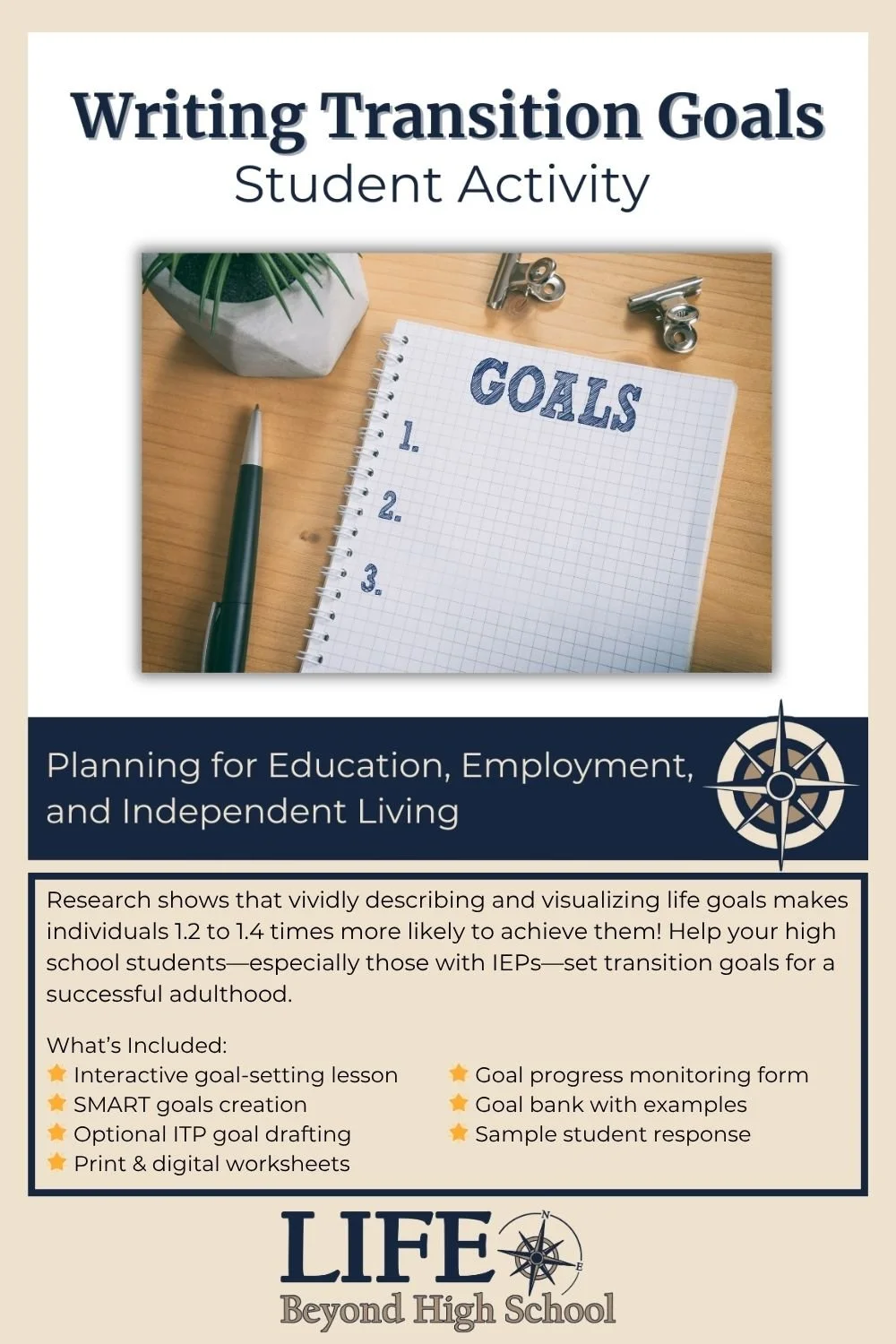Student SMART Goals Examples to Support Transition Planning
That horrifying moment when you're looking for an adult, but you realize you are an adult. So you look around for an older adult. An adultier adult. Someone better at adulting than you. ~Unknown
For our students, we are that adultier adult.
Even if we don’t have all the answers ourselves, we do know how to help students take the first steps toward adulthood. One of the most effective ways? Helping them write SMART goals for their lives beyond high school.
In this post, we’ll look at:
Why SMART goals matter in transition planning
How to guide students through the process
Examples of SMART goals for education, employment, and independent living
A ready-to-use activity you can use in your classroom
Why Use SMART Goals with Students?
SMART goals help students:
Focus on what matters
Break big dreams into doable steps
Track their own progress
Feel ownership over their IEP and their future
Whether you’re teaching a life skills class, prepping for IEPs, or just trying to get students to think beyond graduation, SMART goals can anchor your transition planning in something real and practical.
Start with Student Vision
I like to start with a simple activity:
Ask students to choose a domain (education, employment, or independent living) and imagine their life in that area 1, 5, and 20 years from now.
Here are a few prompts to spark their thinking:
What kind of job do you want to have?
Where do you want to live?
What do you want to learn or study?
When you picture your adult life, what do you see? What excites you?
This helps students think long-term without feeling overwhelmed. Once they’ve explored a few ideas, we guide them in choosing one priority to focus on and then start turning it into a goal.
Turning Aspirations into SMART Goals
Once students have a clear vision, we break it down into a SMART goal:
Specific – What exactly do you want to accomplish?
Measurable – How will you know it’s done?
Achievable – Is it realistic based on where you are now?
Relevant – Does it align with your future plans?
Time-bound – When will it happen?
Student SMART Goals Examples
Here are a few real-world student SMART goals examples they might write (or adapt) for their IEP transition plans:
📚 Postsecondary Education
I will apply to a community college with an automotive program by November 1.
I will complete a FAFSA application with my counselor by January 15.
I will research two certificate programs in welding by the end of the semester.
💼 Employment
I will create a resume with help from my teacher and apply to two part-time jobs by the end of the month.
I will complete a mock interview with my transition coordinator by next Friday.
I will shadow a cosmetologist for one school day by April.
🏠 Independent Living
I will practice doing laundry once a week at home for the next 3 months.
I will make a monthly budget with fixed and variable expenses by the end of the quarter.
I will study the driver’s handbook and take one DMV practice test each week until I pass the permit test.
Helping Students Write Their Own
I’ve found that students are more engaged when they own their goals, especially when they see how those goals connect to the real world.
To make the process easier, I created a goal-setting lesson that walks students through:
Brainstorming their future vision
Choosing a domain to focus on
Writing a SMART goal
Breaking that goal into manageable steps
Tracking their progress over time
Walk students through the process of developing their own transition goals.
What If This Feels Too Hard?
Some students will struggle to put their goals into words. That doesn’t mean they don’t have dreams or plans. It just means we may need to scaffold the process a bit.
Here are a few ways to support students with different learning needs:
Use speech-to-text tools so students can talk through their ideas
Act as a scribe or provide sentence starters to get them going
Let students add images or visuals to help express their goals
Celebrate small, concrete steps. Practicing laundry once a week counts!
Encourage students to brainstorm in pairs or small groups
Remind them that goal-setting is a skill, and like any skill, it gets better with practice
The goal isn’t perfection. It’s helping students practice thinking about their future and taking ownership of their plans. It’s natural (and more realistic!) to revisit and revise goals over time. In fact, goal-setting should be a cycle, not a one-and-done task.
Want a Done-for-You Version?
If you'd like everything in one place (instructional slides, a graphic organizer, a simple tracker, and a transition goal bank) you can grab my complete resource here:
👉 Transition Goal Setting Lesson on TPT
Want to go even further? It’s also part of my High School Transition Activities Bundle, which includes a collection of student-centered tools for thinking about postsecondary goals.
Final Thoughts
SMART goals aren’t just about IEP compliance. They’re about helping students to imagine a future they care about and to take concrete steps to get there.
Even if they’re not quite ready to lead their own IEP meetings (yet!), goal-setting like this gives them a meaningful seat at the table. And when students feel real ownership over their goals, they’re so much more motivated to go after them.


